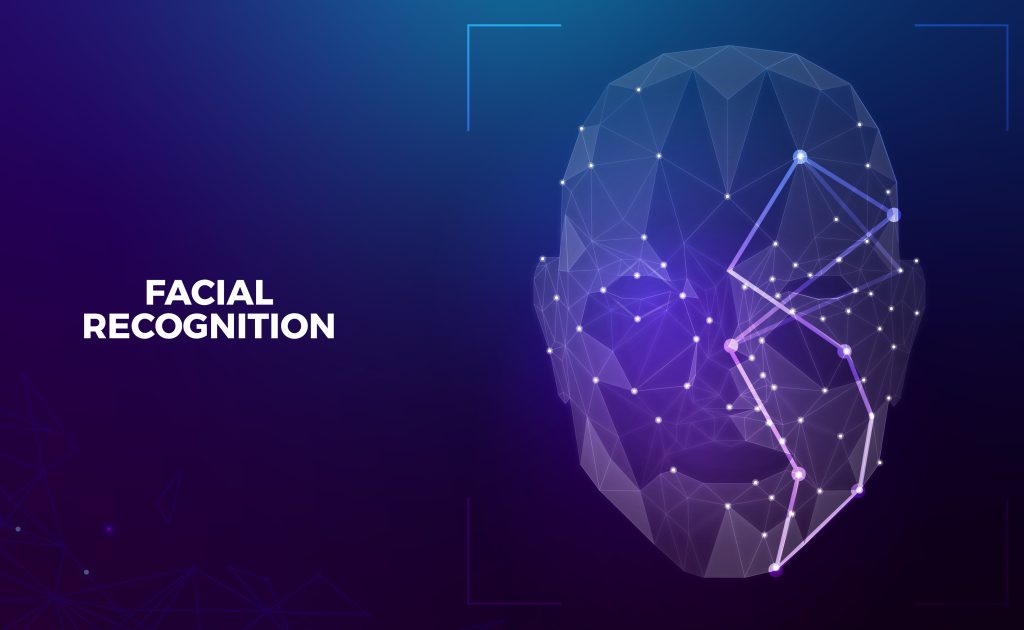
What are Face Recognition Tools?
Face recognition tools refer to software or systems that utilize computer vision and machine learning techniques to automatically detect, analyze, and recognize human faces from images or video data. These tools are designed to identify individuals based on unique facial features and can be used for a variety of applications, including security, access control, user authentication, personalized experiences, surveillance, and more.
Face recognition tools typically consist of algorithms and models that are trained on large datasets to learn facial patterns, features, and variations. They leverage deep learning techniques, such as convolutional neural networks (CNNs), to extract facial embeddings or representations that capture the distinctive characteristics of each face. These embeddings are then compared with existing face templates or a database of known faces to determine similarity or identity.
Here are 10 popular face recognition tools that are widely used in various applications:
- OpenCV
- Dlib
- TensorFlow
- Microsoft Azure Face API
- Amazon Rekognition
- FaceNet
- Kairos
- Face Recognition by Aging
- Luxand FaceSDK
- FaceX
1. OpenCV:
OpenCV (Open Source Computer Vision Library) is a versatile open-source computer vision library that provides face detection and recognition functionalities. It offers robust face detection algorithms and pre-trained models for facial recognition.
Key features:
- Image and Video Processing: OpenCV provides a comprehensive set of functions and algorithms for image and video processing. It supports reading, writing, and manipulation of images and videos in various formats. It offers operations such as resizing, cropping, rotation, filtering, and blending.
- Image and Video Capture: OpenCV allows capturing video from cameras or reading video files. It provides an interface to interact with cameras and grab frames in real time. It supports a variety of camera interfaces and formats, making it versatile for different platforms.
- Object Detection and Tracking: OpenCV includes algorithms for object detection and tracking in images and videos. It provides pre-trained models and functions for popular object detection techniques like Haar cascades and deep learning-based methods. These capabilities are widely used in applications like face detection, pedestrian detection, and motion tracking.
2. Dlib:
Dlib is a powerful open-source library that includes facial landmark detection, face detection, and face recognition capabilities. It provides high-quality and accurate face recognition algorithms and models.
Key features:
- Face Detection: Dlib includes highly accurate face detection algorithms that can identify faces in images or video frames. It utilizes a combination of Haar cascades, HOG (Histogram of Oriented Gradients), and SVM (Support Vector Machines) to detect faces with high precision.
- Facial Landmark Detection: Dlib provides facial landmark detection algorithms that can identify specific points on a face, such as the positions of the eyes, nose, mouth, and jawline. These landmarks are essential for tasks like face alignment, emotion analysis, and face morphing.
- Object Detection: Dlib offers object detection algorithms based on a combination of HOG features and SVM classifiers. It allows users to train their own object detectors or use pre-trained models for detecting various objects in images or video frames.
3. TensorFlow:
TensorFlow, an open-source machine learning framework developed by Google, offers face recognition capabilities through its deep learning models and APIs. It provides pre-trained models for face recognition tasks and allows users to develop custom face recognition models.
Key features:
- Flexibility and Scalability: TensorFlow provides a flexible and scalable platform for developing machine learning models. It supports both high-level APIs, such as Keras, for easy model building, as well as low-level APIs that offer greater flexibility and control over model architecture and training process.
- Deep Learning Capabilities: TensorFlow is particularly known for its robust support for deep learning models. It offers a wide range of pre-built layers and operations for building deep neural networks, including convolutional neural networks (CNNs), recurrent neural networks (RNNs), and transformers. It also provides pre-trained models and utilities for transfer learning.
- TensorFlow Extended (TFX): TensorFlow includes TFX, an end-to-end platform for deploying machine learning models in production. TFX provides tools for data preprocessing, model training, model serving, and monitoring. It facilitates the development of scalable and production-ready machine learning pipelines.
4. Microsoft Azure Face API:
Microsoft Azure Face API is a cloud-based face recognition service provided by Microsoft. It offers robust face detection and recognition functionalities with features like facial verification, identification, emotion detection, and age estimation.
Key features:
- Face Detection: Azure Face API can detect human faces in images or video streams. It provides highly accurate face detection capabilities, even in complex scenarios with varying lighting conditions, occlusions, and pose variations.
- Face Recognition: The Face API enables face recognition by identifying and verifying individuals based on their facial features. It allows you to create and manage face recognition models, enroll faces, and perform face matching and identification tasks.
- Facial Landmark Detection: The API can detect facial landmarks or key points on faces, such as the positions of eyes, nose, mouth, and eyebrows. This information is useful for face analysis, alignment, and other facial feature-based applications.
5. Amazon Rekognition:
Amazon Rekognition is a cloud-based computer vision service offered by Amazon Web Services. It provides face detection and recognition capabilities, along with features like facial analysis, celebrity recognition, and facial similarity searching.
Key features:
- Face Detection and Analysis: Amazon Rekognition can detect faces in images and videos with high accuracy. It can identify and analyze facial attributes such as age range, gender, emotions (like happy, sad, and angry), and facial landmarks (such as eyes, nose, and mouth).
- Face Recognition: The service provides face recognition capabilities, allowing you to create face collections and compare faces against a collection to determine potential matches. It enables use cases like identity verification, person tracking, and indexing faces for faster searching.
- Celebrity Recognition: Amazon Rekognition has a built-in celebrity recognition feature that can identify well-known celebrities in images and videos. This functionality can be used for media analysis, content tagging, and social media applications.
6. FaceNet:
FaceNet is a deep learning-based face recognition system developed by Google. It utilizes deep convolutional neural networks to generate highly discriminative face embeddings, enabling accurate face recognition and verification.
Key features:
- Deep Convolutional Neural Network (CNN): FaceNet utilizes a deep CNN architecture to extract high-level features from face images. The network learns to automatically encode facial features in a way that is invariant to variations in lighting, pose, and facial expressions.
- Triplet Loss Optimization: FaceNet employs a triplet loss function during training to learn a face embedding space where faces of the same identity are closer together and faces of different identities are farther apart. This metric learning approach improves the discriminative power of the learned embeddings.
- End-to-End Learning: FaceNet is trained in an end-to-end manner, meaning that the entire network is trained jointly to optimize the embedding space and minimize the triplet loss. This approach allows the model to learn directly from raw face images, without the need for manual feature extraction.
7. Kairos:
Kairos is a cloud-based face recognition platform that offers a range of face analysis and recognition services. It provides APIs for face detection, face recognition, emotion analysis, age estimation, and gender identification.
Key features:
- Facial Recognition: Kairos offers highly accurate facial recognition capabilities. It can detect and recognize faces in images or video streams, enabling identity verification, access control, and personalized user experiences.
- Face Matching and Identification: The platform allows for face matching and identification by comparing faces against a database of known individuals. It can determine if a face belongs to a known person or if it is an unknown face, enabling applications such as user authentication and watchlist screening.
- Emotion Analysis: Kairos includes emotion analysis features that can detect and analyze facial expressions to determine emotional states. It can recognize emotions such as happiness, sadness, anger, surprise, and more. This functionality is useful for sentiment analysis, user experience optimization, and market research.
8. Face Recognition by Aging:
This Python library by Adam Geitgey provides a simple and easy-to-use face recognition API. It utilizes the lib library and pre-trained models to perform face recognition tasks.
Key features:
- Face Detection: The library offers robust face detection capabilities, allowing you to locate and identify faces within images or video frames. It can detect multiple faces in a given image, even under varying lighting conditions and different orientations.
- Face Recognition: Face Recognition by aging includes face recognition functionality, enabling you to compare and identify faces by creating unique face encodings. It provides a convenient API for face matching and verification against a database of known faces.
- Facial Feature Extraction: The library can extract facial features such as landmarks, facial landmarks, and pose estimation. It provides access to key points on a face, including eyes, nose, mouth, and eyebrows, allowing for further analysis and applications such as face alignment and augmented reality.
9. Luxand FaceSDK:
Luxand FaceSDK is a commercial face recognition software development kit (SDK) that provides robust face detection and recognition capabilities for desktop and mobile platforms. It supports real-time face detection and offers high accuracy in face recognition tasks.
Key features:
- Face Detection: Luxand FaceSDK provides robust face detection capabilities, allowing you to detect and locate faces within images or video streams. It can detect multiple faces simultaneously, even in complex scenarios with variations in lighting, pose, and occlusions.
- Face Recognition: The SDK includes powerful face recognition algorithms for identifying and verifying individuals based on their facial features. It enables you to create face recognition systems, enroll faces, and perform accurate face matching and identification tasks.
- Facial Landmark Detection: Luxand FaceSDK can detect and track facial landmarks or key points on faces, such as the positions of eyes, nose, mouth, and eyebrows. This feature enables detailed face analysis, face alignment, and applications that require precise facial feature extraction.
10. FaceX:
FaceX is a cloud-based face recognition API that offers a comprehensive set of face recognition features, including face detection, identification, verification, and emotion analysis. It provides easy-to-use APIs for integrating face recognition into applications.
Key features:
- Face Detection: FaceX provides accurate face detection capabilities, allowing you to locate and identify faces within images or video frames. It can detect multiple faces in a given image and handle variations in lighting, pose, and occlusions.
- Face Recognition: The platform includes face recognition functionality, enabling you to compare and identify faces by creating unique face templates or embeddings. It allows you to perform face matching and verification against a database of known faces for various applications.
- Facial Attribute Analysis: FaceX can analyze facial attributes such as age, gender, ethnicity, and emotions. It provides insights into demographic information and emotional states, which can be utilized for targeted marketing, sentiment analysis, and user experience optimization.
